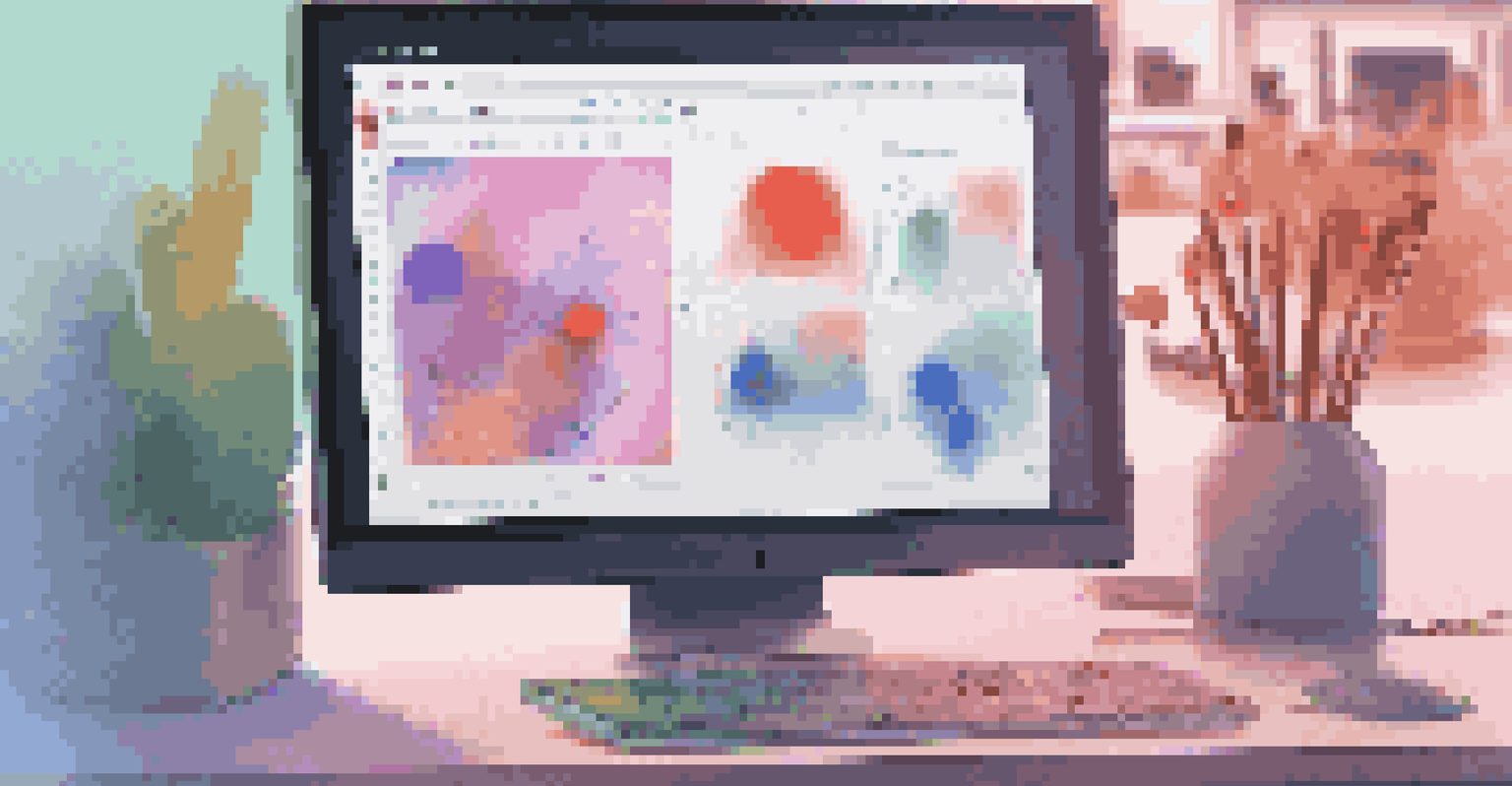The Significance of Prototyping in Mobile Application Design

What is Prototyping in Mobile App Design?
Prototyping in mobile app design refers to creating a preliminary model of the application. This model allows designers and developers to visualize the app's functionality and user interface before full-scale development begins. Think of it like drafting a blueprint for a house; without it, the final structure may not turn out as expected. By using prototypes, teams can catch potential issues early and refine their ideas based on feedback.
Prototyping is the conversation you have with your product before you build it.
There are various types of prototypes, from low-fidelity wireframes to high-fidelity interactive models. Low-fidelity prototypes are often simple sketches or basic digital layouts, while high-fidelity prototypes look and feel like the final product. Each type serves a unique purpose in the design process, helping teams iterate quickly and efficiently.
Ultimately, prototyping is a crucial step in ensuring that the mobile app meets user needs and expectations. It allows for exploration and experimentation, which can lead to innovative features and improved user experiences. By investing time in prototyping, teams can save significant resources in the long run.
Benefits of Prototyping for User Experience
One of the key benefits of prototyping is its ability to enhance user experience. By creating a tangible model, designers can better understand how users will interact with the app. This understanding leads to more intuitive interfaces and user flows, making it easier for users to navigate the app effectively.

Prototypes also facilitate early user testing, which is invaluable for gathering feedback. When users interact with a prototype, they can voice their opinions on design elements, functionality, and overall usability. This feedback helps designers make informed decisions and adjustments before the app is launched, ensuring it aligns with user expectations.
Prototyping Enhances User Experience
Creating prototypes allows designers to understand user interactions better, leading to intuitive interfaces and improved usability.
Moreover, involving users in the prototyping phase fosters a sense of ownership and connection to the app. When users see their feedback influencing the final product, they are more likely to feel invested in its success. This relationship between the users and the design team can lead to a more loyal user base.
Cost-Effectiveness of Prototyping
Prototyping can significantly reduce development costs in mobile app design. By identifying problems early in the process, teams can avoid costly revisions that often arise during later stages of development. It’s like fixing a small leak in a roof before it turns into a major water damage issue; addressing issues upfront saves both time and money.
The prototype is the bridge between the idea and the final product.
Additionally, refining design concepts through prototyping minimizes the risk of developing features that users don’t want or need. When teams invest in creating prototypes, they can validate ideas before committing resources to full development. This strategic approach ensures that funds are spent wisely and on features that genuinely enhance the user experience.
In the fast-paced world of mobile app development, staying within budget is crucial. Prototyping not only helps in cost management but also accelerates the overall development timeline. With clearer objectives and reduced revisions, teams can bring their apps to market more quickly and efficiently.
Facilitating Collaboration among Team Members
Prototyping encourages collaboration among various stakeholders in the app development process. Designers, developers, and product managers can come together to discuss the prototype, share insights, and align their visions. This collaboration is essential for creating a cohesive product that meets both business goals and user needs.
Having a visual representation of the app fosters open communication, as it gives everyone something concrete to refer to. It’s easier to critique and discuss a prototype than abstract ideas or concepts. This clarity helps in minimizing misunderstandings and ensures that all team members are on the same page.
Prototyping Saves Development Costs
By identifying potential issues early, prototyping helps teams avoid costly revisions and focus on features that truly meet user needs.
Moreover, involving cross-functional teams early in the design process can lead to innovative solutions that might not have emerged otherwise. Different perspectives can inspire new features or improvements, enhancing the overall quality of the app. Collaboration through prototyping ultimately leads to a more well-rounded final product.
Testing and Validating Ideas with Prototypes
Prototyping serves as a vital tool for testing and validating design ideas before they go into development. By creating a prototype, teams can simulate the user experience and identify any flaws or usability issues. This process allows designers to make necessary adjustments based on real user interactions.
User testing with prototypes can reveal insights that might not be obvious in a brainstorming session. For example, a design that seems intuitive on paper may confuse users in practice. By observing users as they interact with the prototype, designers can gain valuable feedback that informs their decisions and refinements.
Furthermore, testing prototypes also helps in prioritizing features based on user needs. By understanding which elements resonate with users, teams can focus on developing what truly matters, leading to a more successful app. This iterative approach to design ensures that the end product is user-centric and effective.
Iterative Design Process and Prototyping
The iterative design process is a core principle in mobile app development, and prototyping is a key component of this approach. Instead of creating a final product in one go, teams work in cycles, continuously refining their designs based on feedback and testing. Prototyping fits seamlessly into this process by providing a means to visualize and test new ideas quickly.
Each iteration of the prototype can incorporate user feedback, leading to continuous improvement. This cycle of design, test, and refine creates a dynamic environment where innovation thrives. It encourages designers to experiment and take risks, knowing they can adjust based on user responses.
Collaboration Boosts Design Quality
Prototyping fosters collaboration among team members, resulting in innovative solutions and a cohesive final product.
Ultimately, iterative design leads to a better end product. The more cycles a team goes through, the more they learn about user preferences and behaviors. This knowledge translates into a mobile app that not only functions well but also delights its users.
Prototyping Tools and Technologies
In today’s digital landscape, a variety of prototyping tools and technologies are available to assist designers. Tools like Sketch, Figma, and Adobe XD offer robust features for creating interactive prototypes that mimic the final user experience. These tools make it easier than ever for teams to collaborate and share their designs with stakeholders.
Additionally, many prototyping tools provide functionalities for user testing and feedback collection. This integration streamlines the process of refining prototypes based on user insights, making it a one-stop solution for many design teams. With the right tools, teams can create high-fidelity prototypes that provide a realistic representation of the final product.

As technology continues to evolve, so do the capabilities of prototyping tools. Emerging technologies like augmented reality (AR) and virtual reality (VR) are beginning to play a role in mobile app prototyping, offering new ways to visualize and interact with designs. Embracing these advancements can further enhance the prototyping process and lead to innovative app experiences.